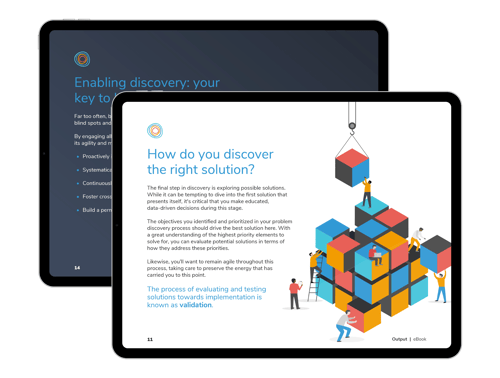Remember when Netflix would send physical DVDs to your home every month? It's almost hard to believe how much the online streaming giant has changed over the last 20+ years — which is exactly why Netflix is such a perfect example of the power of product innovation.
As the largest streaming service in the world, Netflix has continuously weathered changing technology and consumer attitudes to stay competitive — but how do they do it? The answer is simple: Netflix has remained successful because it follows the core principle of product innovation. Product innovations should always satisfy real customer needs.
In this article, we'll reveal 4 secrets to designing and implementing successful product innovations, helping you attract and retain customers and future-proof your business.
At software companies, you'll almost always find one or more dedicated product managers. These employees act as the "CEO" of the product, balancing customer needs, market demands and internal objectives to oversee meaningful product innovations.
While product managers serve a crucial role in the software space, it is rare to find an equivalent position at organizations in other industries. However, thinking like a product manager is essential to product innovation in any industry because, truthfully, everyone is a product manager.
Whether you're working in customer service, managing employee recruitment or making financial decisions in the C-suite, the "product" you offer can always be refined to serve your customer better. Thinking like a product manager helps you take ownership of this power, allowing you to proactively identify opportunities and test and implement solutions that will drive long-term value for your organization.
The key to solving for your customer is having a good understanding of who that customer is and what they need. Depending on your role, your customer might be a patient, a student, a prospect, a current customer or even a group of employees. Once you've identified who your customer is, you can profile their jobs to be done and pain and gains.
Taking inventory of your customers' jobs to be done and pains and gains helps you focus on making product innovations that truly satisfy their needs, rather than simply innovating for the sake of innovation.
It can be tempting to rely on assumptions to drive your product innovation decisions — but this can quickly lead you down the wrong path. Instead, you should use data to inform your strategy and validate any assumptions that arise along the way with experiments and research.
For example, you may notice that one of your product features is significantly under-utilized compared to the rest of your product features. Rather than assuming that customers simply do not want or need this feature, you should verify through customer feedback what the underlying cause for this trend might be. You may uncover that users simply do not know how to use the feature, or they need more prompting to remember that it's there. These insights could spur product innovations such as interactive feature tutorials or a product redesign that positions the feature more prominently.
Keeping a pulse on observational user data will often uncover surprising opportunities for product innovation; using these insights, you can deliver more meaningful, value-based changes for customers.
Believe it or not, it's rather easy to make meaningless product innovations (here's a modest list of 74 examples). The takeaway? Just because something is new does not mean it is an improvement.
The key is focus on your objectives: do you want to provide the fastest platform? The most durable products? The best customer experience? The strongest company culture? When your objectives intersect with a data-backed customer need, you've got a recipe for meaningful product innovation.
Investing time and resources in product innovation can feel like a risk, but the reality is that not doing so poses the greatest risk. With a continued focus on your objectives and customer needs, you can make changes that provide lasting returns and help your business relevant for the long term.
Ultimately, the recipe for successful product innovation is simple:
The process is so simple, in fact, that everyone can — and should — get involved. Democratizing product innovation across your organization allows everyone, regardless of their role or experience, to continuously move the organization forward. To learn more about involving employees in the innovation process, check out our free guide, Enabling Discovery: How to Find Business Problems Worth Solving.

170 - 422 Richards Street
Vancouver BC V6B2Z4